2020.7 KENDOJIDAI
In preparation for the upcoming day of resuming training, here are some tips for a workout you can do at home. Professor Takahashi is a leading sports biomechanics expert and long-time All-Japan strength training coach. We asked the professor for a menu that can be started right away and is easy to follow. Let’s try to keep your body mobile with continued training that can be done easily in a confined space and will help prevent injuries when you resume Keiko, making it easier for you to get back to Kendo.
Takahashi Kentaro, 7th Dan
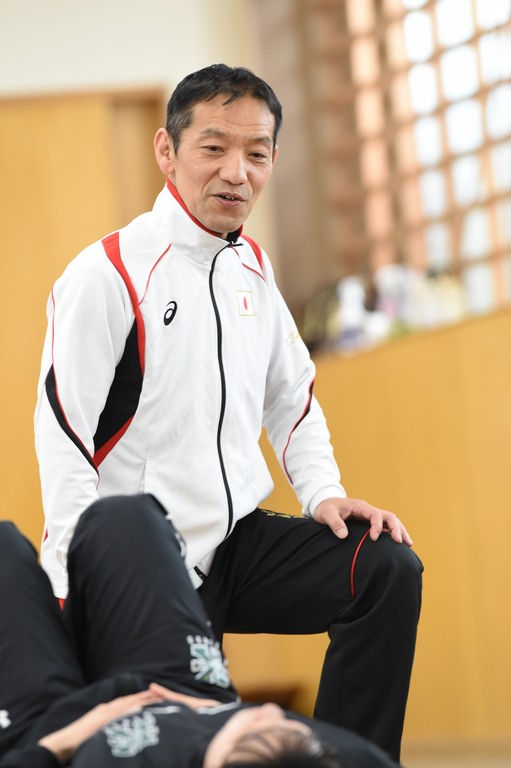
Professor at Kanto Gakuin University. Born in Gunma Prefecture in 1972. From Sugamo High School, he moved to Yokohama National University where he got a master’s degree. Then he went on to obtain his Ph.D. at Nippon Sport Science University. Since 2006, Takahashi Kentaro has been the physical training coach of the All Japan representative’s training camps. After working at Gunma College of Technology, he became a professor at Kanto Gakuin University where he is head coach of the Kendo club today.
At this point in time, the trend is to avoid training that involves interpersonal training which includes Kendo Keiko. Therefore, in this article we will discuss training that you can do on your own. For endurance and physical fitness, it is better to jog or walk. Some of you may have a problem with this and some of you may not, but it is easy to get started with, even in your own room. I will introduce a menu of exercises that you can do in this article.
If you don’t do anything these days, your body will naturally adapt to the easier way. As has been built into our DNA since time immemorial, once we eat we then eat as many calories as possible and we have an instinct to rest our bodies to avoid consumption.
If you think back to a time when food was not plentiful, the reason why we have such a system in place is because we are prepared for things like starvation. It must have been necessary to sustain life. But today, when you have a good eating environment and enough food for three meals a day, if you don’t do any physical activity you tend to go into a calorie surplus.
In addition, your muscles and cardiorespiratory function will also decline. This is why you need to do resistance training.
Currently, the All Japan Kendo Federation’s website also mentions that taking a walk and exercising moderately in order to maintain your health is a good way to improve your metabolism and resistance against viruses. I have been a training coach for the All Japan Kendo Federation’s training sessions for many years and now that we can’t do Keiko, I’m sending out training menus to the national team members via social media.
The content of the program includes six to seven different menus which I will be introducing in this article, as well as a combination of thigh lifts with other exercises. The idea is to encourage “circuit training” on a daily basis. The “circuit” involves several sets of repetitions and combines strength training and cardio without breaks. Continuation of this program, which doesn’t take a lot of time, helps to strengthen your endurance, muscle strength, explosive force and physique.
Those who have been doing Kendo for a long time say that they never forget a technique. The opportunities and Maai to strike are engraved in their minds. However, when you feel the opportunity is there but you don’t actually move your body, you can’t perform the technique. Therefore, while you are not able to cross your Shinai with an opponent, you need to train your muscles.
Also, the reason you are quicker to be out of breath when you return to practice is because your cardiovascular function and endurance are affected. This is because. In order to be able to deal with Keiko immediately when it resumes, we must seek correct and quality training to be prepared.
In this article, I will explain training that can be done by middle-aged and older people without difficulty. I will categorize it into core, upper body, lower body, and exercises with Shinai. I encourage the students I teach to take their Shinai in hand every day and swing it as often as possible because they are unable to do Keiko. Also, when it comes to strength training I tell them to find a spot in their schedule, even if it’s just 10 minutes every day and make a habit of doing exercise.
To avoid ending up with a three-day workout, you can have the menu changed daily, Monday for the upper body and Tuesday for the core area for example.
As a reminder, both training menus also include stretching, so it is important to do this while feeling the range of motion of the joints. It is also important to do this daily in order to avoid injuries when you resume Keiko. Please fit this in with both your physical condition of the day and free time without overdoing it.
Circuit training is about 100-120 movements per set, about 10 sets in a row. In AJKF camps, we also work to include 30 push-ups and sit-ups.
As an example of what I’ll be recommending for beginners: 10 squats, 10 knee raises (raise your hands to shoulder height, then raise your left knee to your right hand and your right knee to your left hand), 10 lunges, 10 knee raises, 10 calf raises, 10 repetitions of moving your arms outstretched in front of your body as far back as you can go, keeping them parallel with the floor, 10 knee raises, 10 repetitions where you spread out your arms parallel to the floor and raise them until they come into contact with your ears, 10 knee raises, 10 burpees.
Perform 10 consecutive sets of the above.
The rest of this article is only available for Kendo Jidai International subscribers!

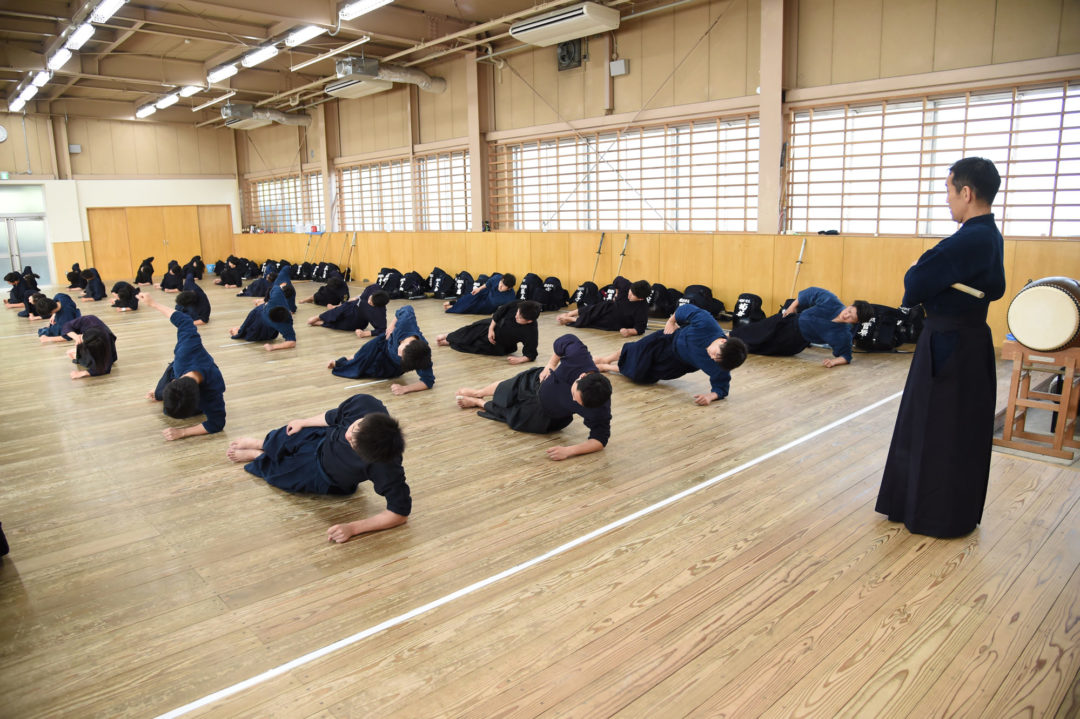

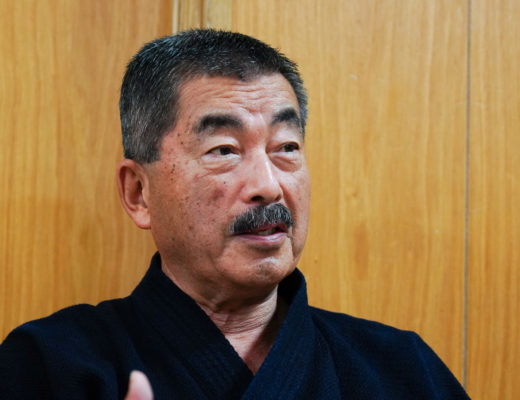
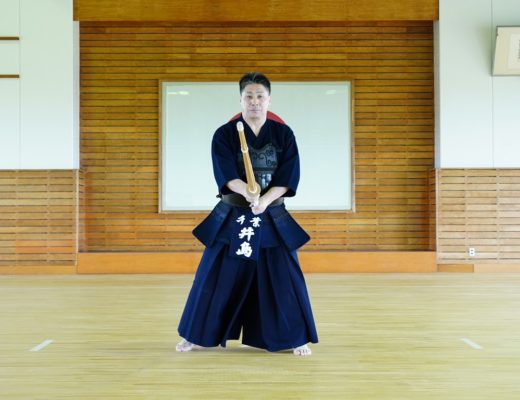
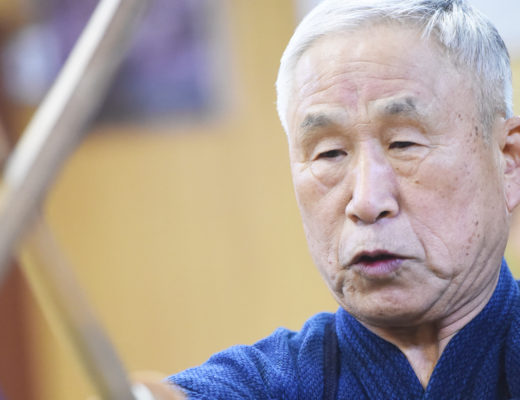
I don’t know if it’s possible but I would love some more insight about #4(biceps).
Looking at the form in the picture, basic knowledge of levers and anatomy tells you that there will only be load on the biceps from 180 to 120~ degrees before it soon shifts the load to the triceps. That’s ignoring a significant 100~ additional degrees of rotation for the biceps if the arm had otherwise started from the low position at her sides.
If there’s an aspect of sport specificity to this bicep curl, I’d love to learn about it. Perhaps he’s trying to tie in the bicep and the tricep with shoulder isometric stability, and not so much develop biceps strength as one would typically think when doing a “bicep curl”..?
Thanks in advance